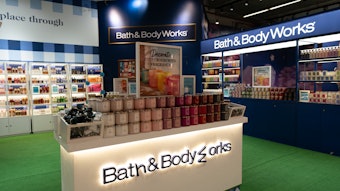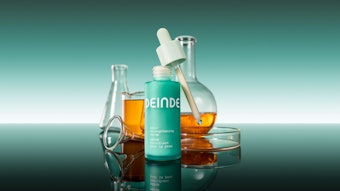- Brand, manufacturers, distributors, wholesalers, retailers and others in the chain of product creation and distribution can be held liable for damages caused by a defect.
- Batch coding is a much more accurate measure than retrieving a sample of the product in question from a claimant.
- By adhering to all packaging and labeling requirements and using batch coding, brands can be confident they have greatly reduced exposure to product liability claims.
When consumers claim they were harmed by a beauty product—usually the claim is a chemical burn or allergic reaction— the potential financial liability can be significant. And because of product and strict liability laws, the claimants don’t have to prove the manufacturer or brand was negligent, only that the product was defective.
Strict liability, also called “liability without fault,” means that manufacturers, distributors, wholesalers, retailers and others in the chain of distribution can be held liable for damages caused by a defect—regardless of whether or not they are at fault. How, then, can a brand defend itself in a personal injury case involving its product? The key is to be able to trace the product back to its original batch.
Every product, whether it is headed for the salon or for the retail shelf, should bear a stamped batch code that links it back to retained samples in your facility. If you properly retain samples from the original batch, you will be able to prove the exact ingredients that are in the product. This also means that it can be determined whether a product was tampered with after it left your facility.
Key Factors in Your Defense
Beauty products are tested in a controlled environment, so very seldom will they cause a chemical burn or permanent damage without misuse by the end user. There is also the possibility that a consumer has an allergic reaction to the product ingredient.
In the U.S., there is a federal requirement for patch test warnings to be placed on most hair coloring products because of paraphenylenediamine (PPDA), an ingredient that is a known allergen, and other precautions are taken—ingredients are clearly listed and package instructions recommend that end users perform their own patch test by trying the product on a small area of skin. Unfortunately, not everyone reads the instructions or follows them.
In fact, in most cases where people get hurt from a product, it is likely that either the stylist or the consumer did not read the instructions. In a salon setting, stylists working on commission often are moving so fast they do not take the time, and unfortunately, many consumers who purchase the product over the counter can’t be bothered. In reference to allergic reactions, U.S. law states that consumers have a responsibility; so if a consumer has an allergic reaction and it is not a hair coloring product, in most states (with the exception of New Jersey and Massachusetts), a brand can put up a good defense if batches are coded properly.
If product contamination or tampering occurred after product left the brand/manufacturing facility, the only way to prove that the product in question was not the original product is, again, through coding batches. For instance, if there is a claim that a shampoo product contains an ingredient that caused an injury and that ingredient is not found in a retained sample, it demonstrates that something got into the product after it left the facility or there was misuse which led to the alleged injury.
Keep in mind that batch coding is a much more accurate measure than retrieving a sample of the product in question from a claimant. The claimant can be disingenuous and not send it to you, lose or contaminate it, or it can be lost and/or misplaced in transit. In fact, if you have the batch code, you do not need the product back from the claimant. There are instances where distributors or sellers will claim that a shipment of product was contaminated and/or did not fulfill the product requirements. Here too, proper batch coding versus the batch code information from the distributor will prove there was no contamination. Batch coding is also critical in finding out if a product needs to be recalled.
Batch Coding Basics
When there is a claim, the first step is to determine exactly what is in that product, and batch coding is the single most effective way to trace a product back to the facility where it was made. Whether a large brand or a small to mid-sized manufacturer, the date, location and the exact ingredient batch is trackable through batch coding. By following specific batch-coding guidelines, liability can be limited:
Develop a system for how and where to place the batch code number. On containers, jars and bottles, batch code numbers should be on the bottom; for tubes, numbers should be on the crimp.
Create a batch code system with numbers and letters. Document creation date, the shift and the batch number, and create a clear code for the data. For example: 09315A#6 denotes year (09), month (3), day (15), shift (A) and day’s batch (#6).
Make sure batch code ink does not fade under normal conditions.
Retain at least 20 samples from each batch. The number retained depends on the size of the batch, and these should be the product samples that have passed quality control and have been packaged.
Always keep more multiple samples. If something gets contaminated or lost, ensure there are more samples that can be used.
Make sure every container has the proper safeguards to prevent tampering.
Working With Partners
Brands that work with contract packagers and manufacturers should make sure their partners follow the same guidelines, and brands should be sure to retain at least 20 of their own batch samples. If you do not own the formula and have the product made for you by a manufacturer, ask them to provide you with a Certificate of Insurance for vendors/additional insured coverage.
How long should batch samples be retained? Generally, the longer the better. If possible, retained samples should be kept for at least as long as the longest state statute of limitation, which is six years (in Maine, Minnesota and North Dakota). Yet, for certain types of products, such as creams that break down within two to three years, those samples may have to be disposed of sooner because storage can become a problem.
Confidence in Your Product and Partners
Personal injury claims involving beauty products are infrequent, but when they do occur, they have the potential to result in significant settlements or awards. When a court is determining whether a product is defective, there are various factors that will be taken into account, including:
- How and why the product has been marketed.
- Packaging, including instructions or warnings about handling the product.
- How the product is intended to be used.
- The date when product was supplied.
By adhering to all packaging and labeling requirements and using batch coding, beauty brands can be confident they have greatly reduced their exposure to product liability claims.
It is also recommend that brands establish and maintain a solid relationship with your insurance partners. If they are experienced in the beauty industry, they should be able to help you put the right batch coding system in place and guide you in the right direction when claims arise.
Steve Buckley is president of Brownyard Claims Management, a loss prevention and full-service claims subsidiary of Brownyard Group, an insurance provider to cosmetic manufacturers and distributors. Frank Monaco is program manager of Foundation, Brownyard Group’s cosmetic manufacturers insurance program.










